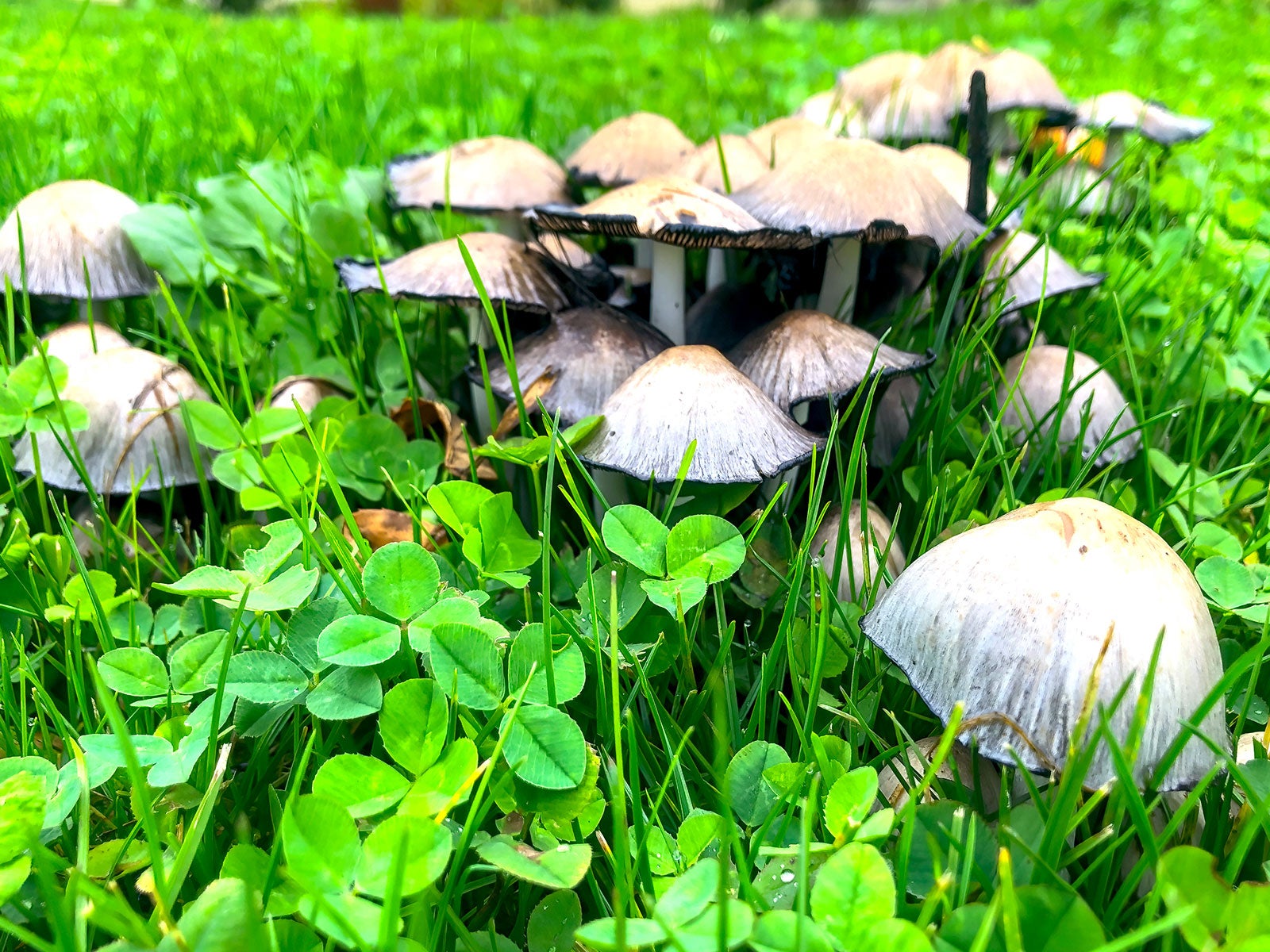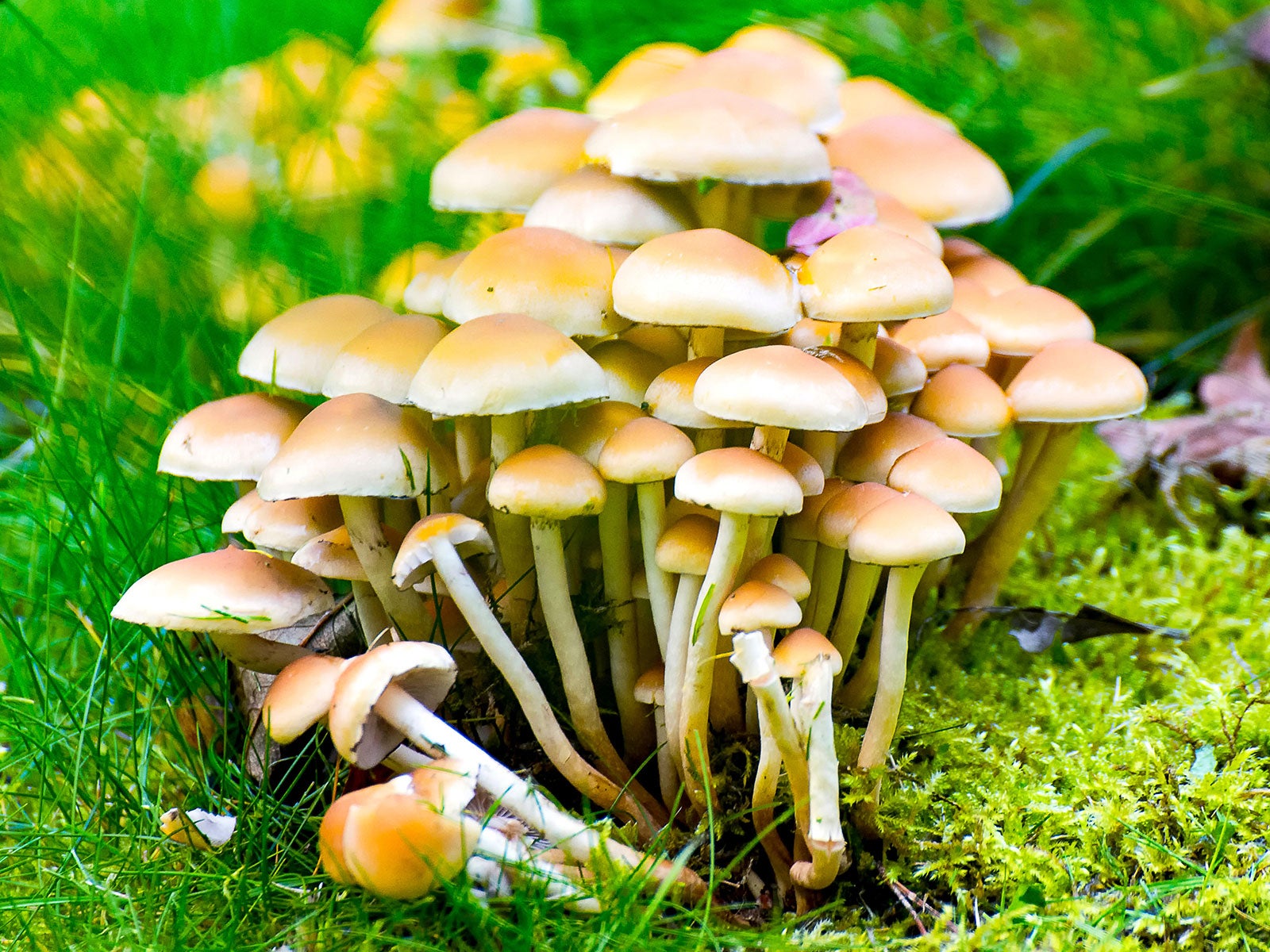Mushrooms In The Garden – Getting Rid Of Unwanted Fungi


Mushrooms in the garden can be an unsettling sight, indicating changes in the soil and in growing conditions generally. While growing mushrooms is becoming more popular as a home interest, fungi can be unpleasant in gardens when they arrive out of nowhere. These unplanned garden guests can also be toxic, so you'll want to remove them if you have curious children or pets.
While the discovery of mushrooms may prompt feelings of unease, they pose no risk to the health of your soil and plants. Indeed, they can have environmental benefits that are worth considering. So unless you have children and pets to worry about, mushrooms can be left where they stand. Here, we explain when (and how) to remove them, and when it's OK to leave them.
Why are Mushrooms Growing in My Garden?
Before you tackle their removal, it helps to understand fungi and why they seem to suddenly appear out of nowhere. Many mushrooms sprout when the right environmental conditions exist, such as moist, shady areas where decaying tree stumps, roots or mulch are found. The mushrooms contain spores that are released to the wind to further spread the fungi.
Mushrooms are the fruiting bodies of fungi present in the soil, which are breaking down organic matter through a network of filaments called hyphae. These fungi live for years in the soil, and only send up the fruiting bodies when conditions are favorable, such as after rainfall.

Common Types of Garden Mushrooms
Knowledge is power, and identifying mushrooms gives you a better handle on next steps. Here are some of the most common mushrooms found in lawns and gardens. You will generally find these on or around mulch, fallen leaves, animal waste or decaying wood:
- Bird's nest fungi – Unique and instantly identifiable, the bird's nest fungus resembles a tiny bird’s nest with eggs. Inedible, but not poisonous.
- Ink caps – Generally pronounced, with a conical shape. These fungi get their name because as their caps decompose, they turn into an inky liquid.
- Puffballs – These fungi (pictured below) are creamy-white or beige balls that break open to release spores. They range in size, and are capable of ballooning to impressive proportions.
- Stinkhorns – Reddish and alarming to look at, stinkhorns certainly demand attention. As their name suggests, they emit a powerful and foul-smelling odor.
- Toadstools – While definitions are not always fixed, this name generally describes a group of inedible or poisonous mushrooms.
- Slime molds – Not actually true fungi, though often associated with them. They form a gooey mass and may resemble vomit. While not actually dangerous, they can look unpleasant.

How to Get Rid of Mushrooms in The Garden
If you are worried about pets or children tasting a mushroom, you can manually remove mushrooms as you see them. These types of fungi are not controlled by fungicides. Wearing gloves, you can mow or rake them, then discard the pieces deep in the compost pile or in a bag in the trash. You can also apply a strong spray of water to break them up. Since mushrooms are only the fruiting bodies of fungi beneath the soil, removing them will not kill the fungus.
Making your gardens less hospitable to fruiting fungi can reduce their appearance in your yard. A fungus in garden soil thrives in moist shade. Watering less or earlier in the day, improving drainage, and trimming shade-producing trees and shrubs can all help. Ultimately, mushrooms will disappear on their own in a few days. Sunny or drier weather also hastens their disappearance.
Sign up for the Gardening Know How newsletter today and receive a free copy of our e-book "How to Grow Delicious Tomatoes".
Frequently Asked Questions
Are Uninvited Mushrooms a Problem?
Believe it or not, mushrooms in the garden can be a sign of healthy soil. Fungi are beneficial, because they help the decomposition process and return nutrients to the soil. Certain fungi in garden soil have a symbiotic relationship with plants. They can actually help to improve root growth and protect roots from disease. When fungal hyphae and plants work together, it is called mycorrhizae.
Should I Get Rid of Mushrooms in The Garden?
If you are wondering how to stop mushrooms from growing in the garden, just remember they don’t pose any harm to grass, plants or soil. However, larger mushrooms or slime molds may cover plants, causing them to yellow. The main reason for removing fungi is to prevent children and pets consuming possibly toxic mushrooms.

After graduating from Oklahoma State University with a degree in English, Susan pursued a career in communications. In addition, she wrote garden articles for magazines and authored a newspaper gardening column for many years. She contributed South-Central regional gardening columns for four years to Lowes.com. While living in Oklahoma, she served as a master gardener for 17 years.